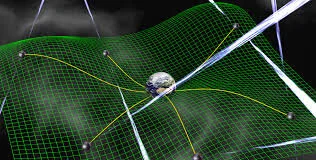This week’s post covers a new measurement of H0 from fast radio bursts, a new compressed low-multipole Planck likelihood, and the first detailed study of the impact of the mass-sheet degeneracy in gravitational wave lensing. Enjoy!
What is the Hubble tension, really? A SH0ES-centric view of the problem
My thoughts on what the Hubble tension really is, based on George Efstathiou’s “To H0 or not to H0?“, arXiv:2103.08723.
Top arXiv papers from Week 10, 2021
After being “away” a few weeks where I used this blog as a conference diary (see TMCC2021 and A (Hubble) Tension Headache), the usual arXiv posts return, covering primordial black holes as (not) dark matter, difficulties in constructing working and realistic early dark energy models, and biases to parameter constraints from the effect of baryonic feedback on the gravitational lensing of the CMB. Enjoy the read!
Busy note 5 and update for the next two weeks
A quick note to inform regular readers that my Week 7 reviews will have to be cancelled as I’m extremely busy preparing and recording my talks (at least one of which should later be available on Youtube) for these two conferences: “Tehran Meeting on Cosmology at the Crossroads” (next week), and “A (Hubble) Tension Headache” (week after the next), where I will be talking about spatial curvature and the Hubble tension (no surprise there) respectively.
Top arXiv papers from Week 6, 2021
Top arXiv papers from Week 3, 2021
This week’s post is dedicated to dark energy in the context of (not solving) the Hubble tension, the possibility that the NANOGrav pulsar timing array may have detected non-tensorial gravitational wave polarizations, and the construction of a general covariant action for the so-called holographic dark energy model. Enjoy the read and have a nice weekend!
Top arXiv papers from Week 51, 2020
After a while that this subject hadn’t appeared in my blog, this week’s entry is entirely dedicated to the Hubble tension: a new observational update in light of Gaia DR3 parallaxes, an old model being killed, and prospects from future neutron star-black hole mergers. A heads-up that this will be the last entry for 2020, as I’m “going” on holidays. Stay tuned for next year’s entries, “see” you soon, Merry Christmas and Happy New Year!
Top arXiv papers from Week 48, 2020
This week’s entry looks at the first measurement of the cosmic birefringence angle from the CMB, the generation of large primordial non-Gaussianity from Higgs-induced modulated reheating, and a quasi-model-independent inference of the Hubble constant and the late-time expansion. Happy Thanksgiving to my American readers!
Top arXiv papers from Week 41, 2020
After disappearing for a week, this week I cover three papers discussing why reducing the sound horizon is necessary but not sufficient to solve the Hubble tension, how to probe gravitational waves using astrometry, and whether unparticles might have something to do with dark energy. As of this week I’ve also decided to start including plots from the respective papers, where necessary, in my summaries, as a good plot is worth a thousand words. Enjoy!
Top arXiv papers from Week 38, 2020
This week I cover a proposal to confirm the possible Dirac nature of neutrinos exploiting a subtle correlation between cosmological and terrestrial measurements, how to determine the sound horizon and H0 from BAO independently of the details of recombination, and a possible interpretation of the recent detection of the stochastic gravitational wave background at nHz frequencies by NANOGrav as being due to cosmic strings. Enjoy and have a nice weekend!









